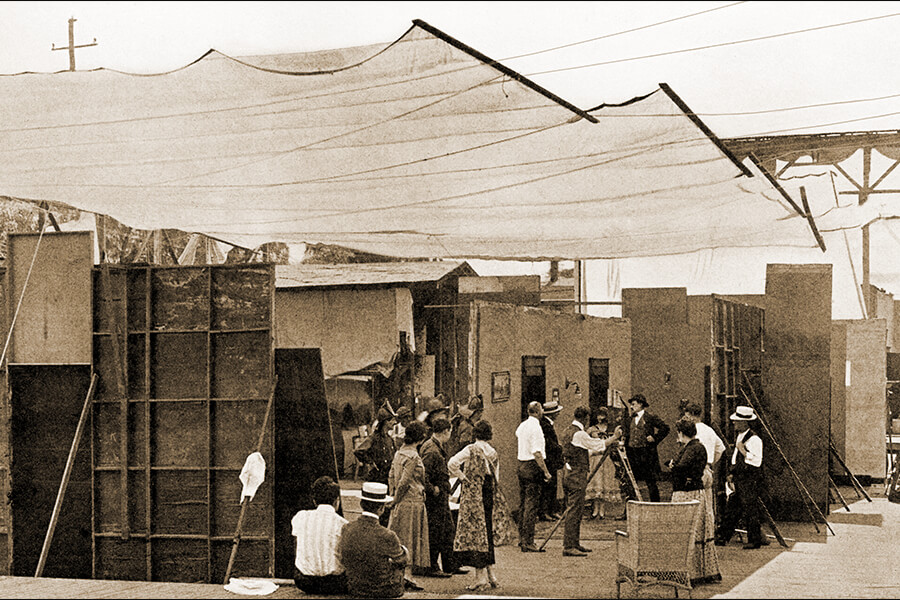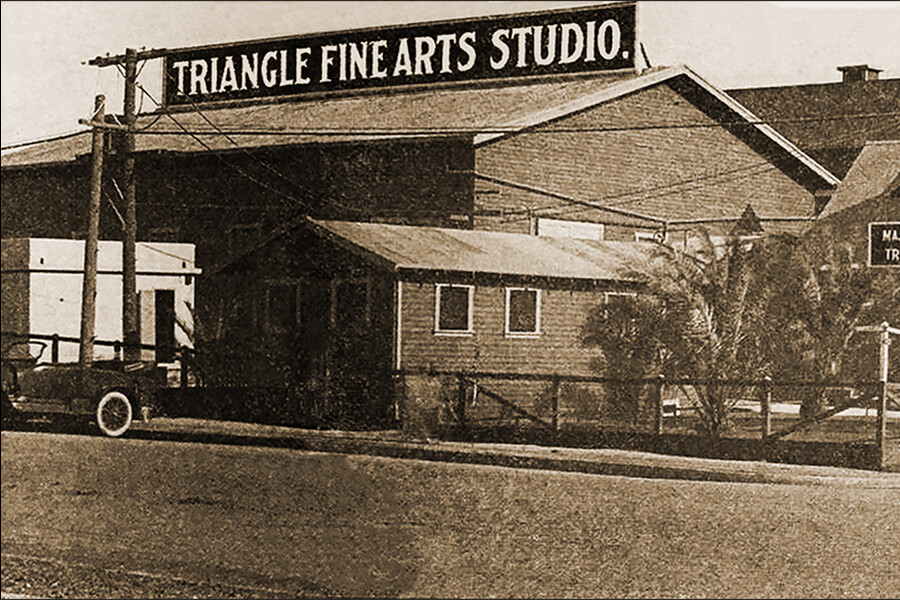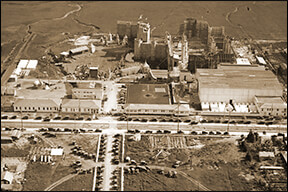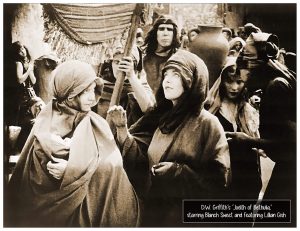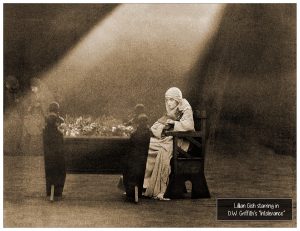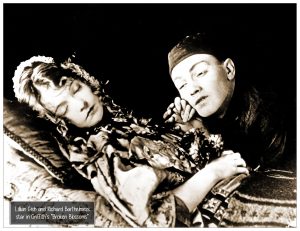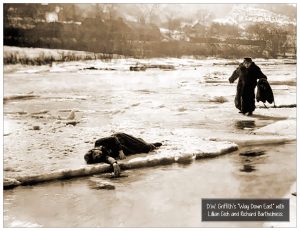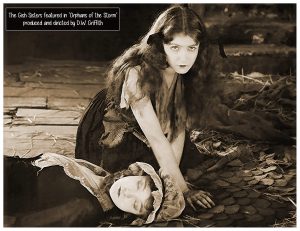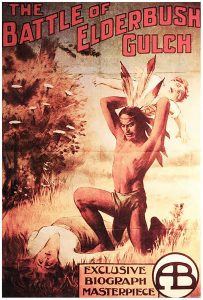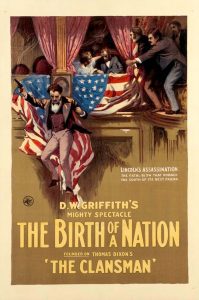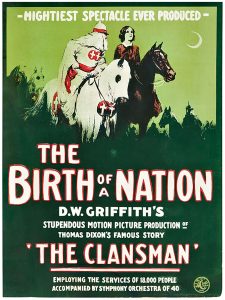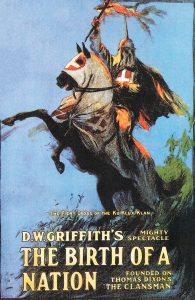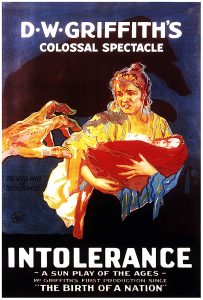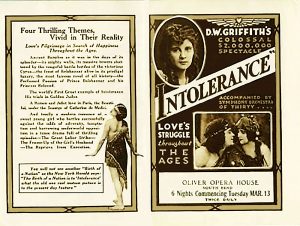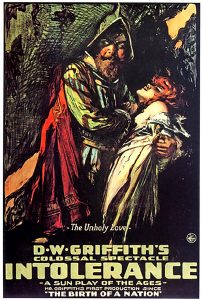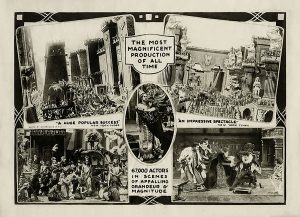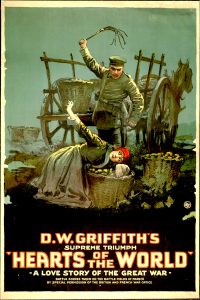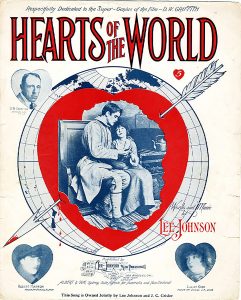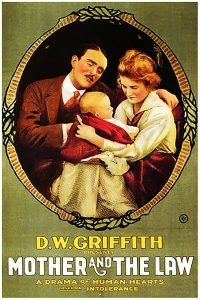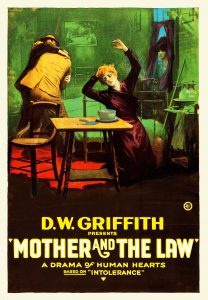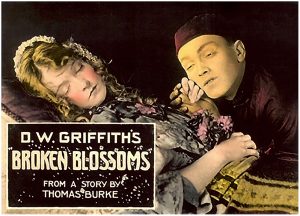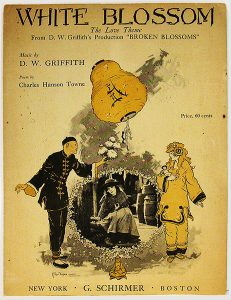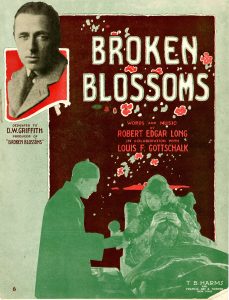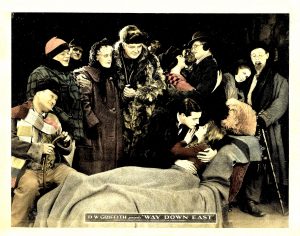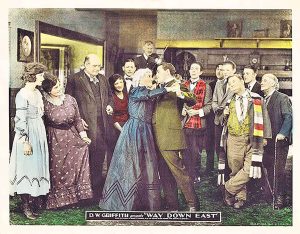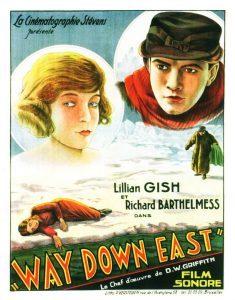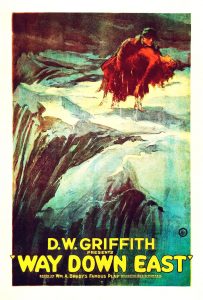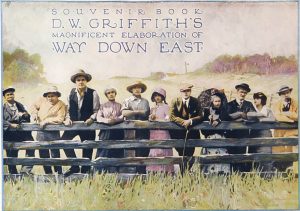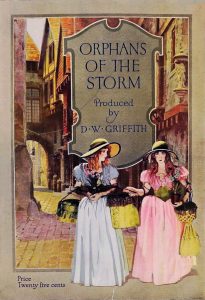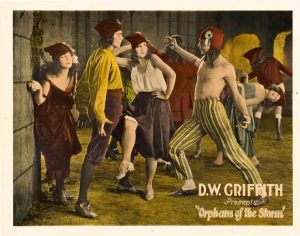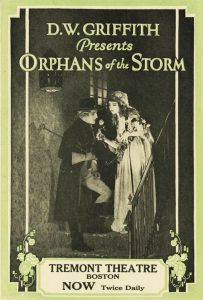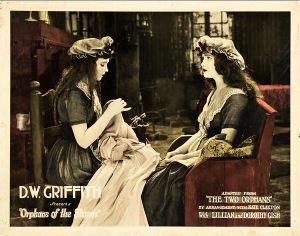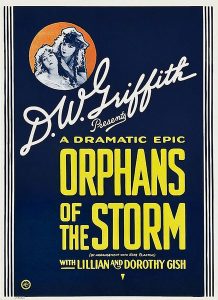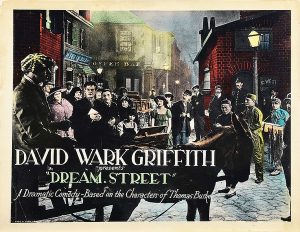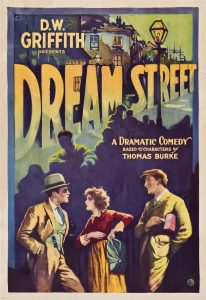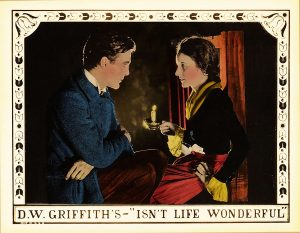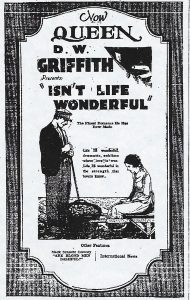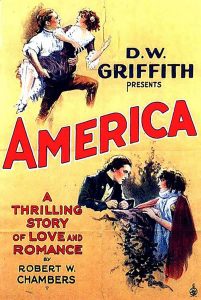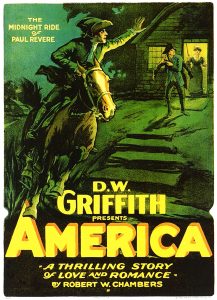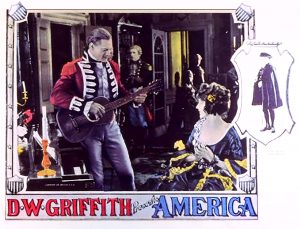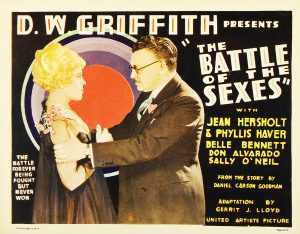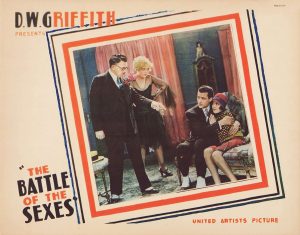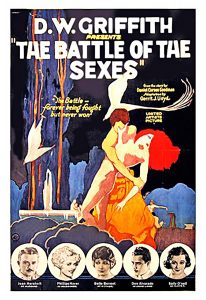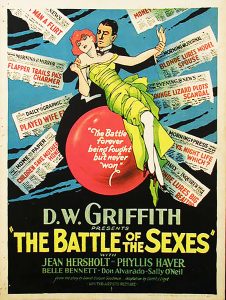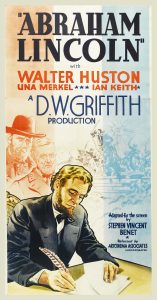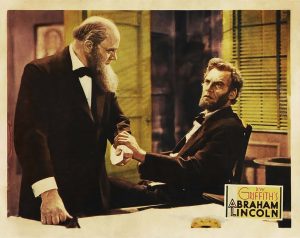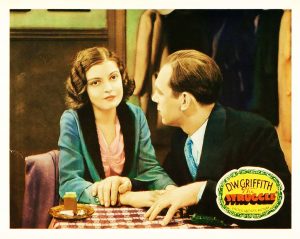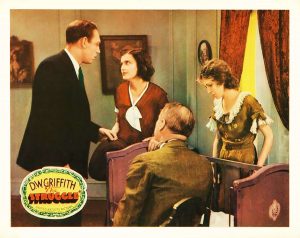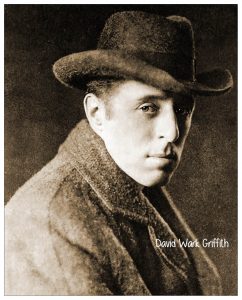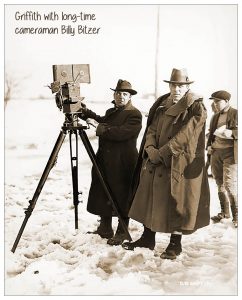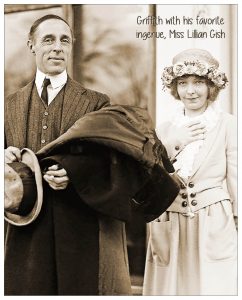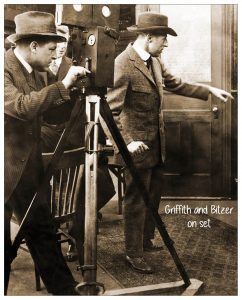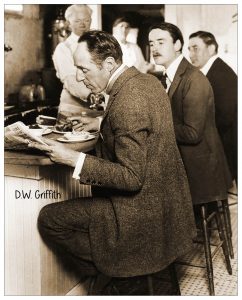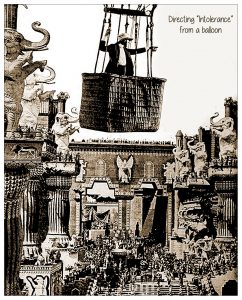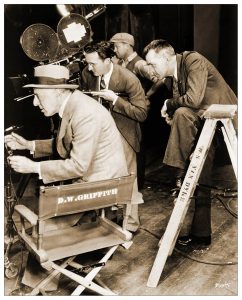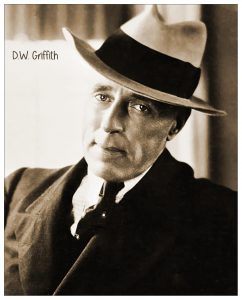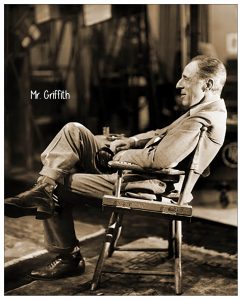Griffith's Studios:
Griffith Studio
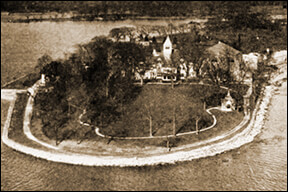
Mamaroneck, NY
1919-ca 1921
click
Related Pages:
Read More:

David Llewelyn Wark Griffith was born in LaGrange, Kentucky January 22, 1875. As a young man, Griffith was a stage actor and playwright. He began his movie career as an extra at the American Mutoscope and Biograph Company, one of the large powerhouse companies of the early silent era. Seeing he had a natural understanding of the movie-making process, in 1908 he was recruited to direct for the company. Griffith seemed to excel at directing right from the beginning and was soon mentoring his fellow company directors.
With his cameraman Billy Bitzer at this side, Griffith created many of the film making techniques we take for granted today: the close-up, the fade-out, the camera pan and zoom, crane shots, soft focus, and so much more.
Perhaps his greatest gift to the film language was the pioneering technique of carrying on multiple storylines or scenes, or multiple character actions in the same scene, cross-cutting between them to show how events, characters, and the passage of time affected all of the characters in the story. The technique, also called parallel-action, is one we take for granted today, as it appears in virtually every film or show, but in his day, it was so powerful and rare that it helped move the art forward to new heights.
Griffith was involved in other pioneering efforts. A group of producers and directors agreed that it was time to abandon the short one-reel and two-reel movies and Griffith was among the first to shoot full-length features. He shot L.A.'s first feature and was the first to shoot a 5 reel film.
In the strictest sense, Griffith was not a mogul. Griffith's focus was neither the business of the business, nor the business of studio ownership. That said, Griffith did own his studios and his product and made sure he had some ownership in everything he did.
In 1913 Griffith parted ways with Biograph and partnered with Harry Aitkin, owner of the Reliance and Majestic production companies, to build a studio and a business where they could produce and control their movies. Known as Reliance-Majestic Studio, and as Fine Arts-Griffith, D.W. Griffith was in charge of all production, as well as directing his own pictures.
Griffith's greatest work was done at his Fine Arts studio in Hollywood. Here he produced what are arguably his masterpieces The Birth of a Nation and Intolerance: Love's Struggle Throughout the Ages. He had major stars under contract: Mary Pickford, Douglas Fairbanks, Lillian and Dorothy Gist, Mae Murray, and others.
After dissolving his relationship with Aitkin and his Hollywood studio, Griffith retreated to the East Coast, where is built another studio at Mamaroneck in Westchester County, NY. There he produced another masterpiece, Way Down East starring his favorite ingenue and muse, Lillian Gish.
In 1919, Griffith was one of the founding partners of United Artists. Along with Mary Pickford, Douglas Fairbanks, Charles Chaplin, and later Samuel Goldwyn, United Artists was created to give the most powerful creative talent in the movie industry a distribution channel where they could make movies, own and control their films, and increase their profits. These were the highest-earning artists of the era.
Over his career D.W. Griffith directed 518 films. He retired in the early 1930s. But his work was not without controversy. The Birth of a Nation, his epic Civil War story and the highest-grossing film of the entire silent era, was both hailed in the South as a masterwork and yet reviled in the North as glorifying the KKK and racism. As the son of a Confederate Colonel, he grew up with a particular (and dare say, romantic) vision of the South during the Civil War and reconstruction. This view colored his vision and set the tone for the telling of this story.
Though he pleaded over and over that this was not his intention, Griffith could never shake the racist stigma of The Birth of a Nation. It followed him like the plague. He produced Intolerance as a response, a 4 part story in which he attempted to demonstrate the evils of systemic intolerance throughout history. He created this latter film as a direct response to the outrage created by the former. It was not really successful, either as an apology, or at the box office. History has not treated D.W. Griffith and his civil war epic kindly.
By the mid-1920s many film directors eclipsed Griffith, in style, popularity, and technique, not to mention income. Griffith's last two movies, both sound features, were literally laughed off the screen. In 1924 he was forced out of United Artists after a series of box office failures.
He had mentored most of the great directors of the silent era. Cecil B. DeMille, Charles Chaplin John Ford, Raoul Walsh, King Vidor, Allan Dwan, Victor Fleming, and many others. As Chaplin put it, "He was the teacher of us all."
Griffith's time in the business had passed. He died on July 23, 1948. He was found sitting unconscious in his favorite chair in the lobby of the Knickerbocker Hotel, where he lived out the final years of his life in relative obscurity and near poverty.
Long live the King.

